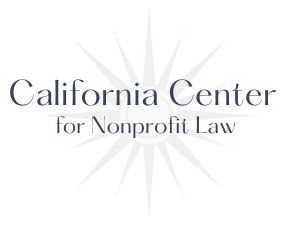
Understanding the Universal Charitable Deduction
The passage of the federal budget reconciliation bill on July 4, 2025, will soon alter charitable giving incentives. The inclusion of the universal charitable deduction, set to launch in 2026, in the legislation means that charitable organizations should begin focusing their year-end planning – and beyond – on the new incentives for charitable giving.
Defining the Universal Charitable Deduction
The universal charitable deduction establishes tax incentives for most American taxpayers. In recent years, over 90% of tax filers didn’t itemize deductions on their taxes, which caused them to forego any tax deductions for charitable giving. The advent of the universal charitable deduction means that individuals who don’t itemize deductions on their taxes can deduct charitable contributions of up to $1,000, beginning in 2026. For joint filers, the deduction limit is set at $2,000.
Communicating the Universal Charitable Deduction to Potential Donors
While establishment of the $1,000/$2,000 universal charitable deduction is a welcome change, the monetary limits on the deduction apply to a person’s total giving for the tax year. As a result, if a donor typically gives your organization $500 or more per year, they may quickly max out their tax deduction in conjunction with their charitable contributions to other organizations.
Therefore, a fundraising campaign based on the tax benefit for donations may be more successful at the beginning of the year rather than at the end, when individuals may have already exhausted their deduction. Nonetheless, donors who give smaller amounts may have some leeway at the end of the year to make additional qualifying contributions.
Understanding the Impact on Itemized Filers
Two separate provisions in the budget reconciliation bill will affect donors who itemize deductions on their tax returns. First, the bill establishes a 0.5% adjusted gross income (AGI) floor below which itemizers cannot claim charitable deductions. In other words, these taxpayers must contribute at least 0.5% of their AGI before they are eligible for the charitable tax deduction. The original proposals were for a 1% floor, so that reduction has some mitigating value in terms of the overall impact on this category of donors.
Since a giving floor has not previously existed, it is unclear how this will impact charitable giving overall. For example, a donor might aggregate two or three years’ worth of giving in the space of one tax year to maximize the charitable tax deduction, but then refrain from giving for two or three years. Another possibility is the increased use of donor-advised funds (DAFs), which allows them to obtain the tax benefit while still making annual decisions about their charitable contributions.
Second, the bill places a 35% cap on the value of the charitable contribution itemized deduction, as opposed to the previous 37%. According to a 2025 research report from Indiana University’s Lilly Family School of Philanthropy, the cap could reduce charitable giving by $41 – $61 billion over the next ten years. The reduced value of the contribution could depress annual giving totals for higher-wealth donors who often base giving decisions at least in part on tax implications.
Recognizing New Limits on Corporate Giving
The budget reconciliation bill establishes a 1% AGI floor on corporate charitable deductions. One study shows that since most corporate contributions fall below this floor, corporations could also “bunch” their contributions for multiple years into a single tax year to meet the new corporate charitable deduction floor. If this occurs, consistent annual corporate support may be lacking. Changes to established giving cycles could create additional uncertainty for charitable organizations.
Frequently Asked Questions (FAQ)
Should charitable organizations tailor their solicitation strategies to reflect these changes to the charitable deduction?
Yes. Charitable organizations should be aware of the impact of the charitable deduction changes on all levels of individual taxpayers and corporations, and adjust their messaging accordingly. Launching giving campaigns at the beginning of the year may be more productive than a historic year-end push, although that may still reach a certain demographic of donors.
How can charitable organizations optimize consistent donations amidst the uncertainty of these charitable deduction changes?
Charitable organizations may want to provide multi-year giving pledges and campaigns to increase the number of consistent donors over a longer period. Providing prospective donors with detailed scenarios on how to maximize their charitable deductions may also be useful.
How should charitable organizations deal with potential fallout from the new corporate charitable tax deduction floor?
Charitable organizations may want to recognize publicly and honor corporations that make multi-year pledges of financial support, even if the gifts are primarily made in certain years to maximize charitable tax deductions.
Talk to the California Center for Nonprofit Law for Advice Today
Nonprofit organizations require legal guidance in everyday matters, as well as with various legal issues that may occasionally arise. You can rely on the California Center for Nonprofit Law for the legal expertise and experience that you need for your nonprofit organization. Contact our office today at 949-892-1221, email us at info@NPOlawers.com, or complete our contact form to learn more about our services.
